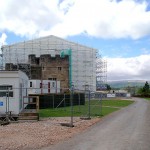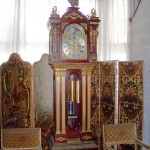The Nene Valley preserved railway has seven and a half miles of track running between Peterborough and Yarwell. There are five stations and a 617 yard tunnel. I don’t remember the tunnel, but I do remember the Polish tank engine and the unusually bumpy ride. Unusually, the railway was re-constructed at the time of re-opening to the Berne continental loading gauge, so that it could use the available European engines and rolling stock. The list of locos and rolling stock is quite long, and includes both Continental and British examples. The principal station and NVR HQ is at Wansford, a popular starting point. All Day rover tickets are available.
Attractions near the line include the Nene Valley Park, Peterborough Cathedral, and “Railworld”, an independent rail museum.
Buckinghamshire Railway Centre
The Centre is a railway museum situated at Quainton station, near Aylesbury. This is primarily a static museum site, though there are short train rides on steaming days. There is quite a lot to look at in various parts of the triangular site, some of it under cover. There are displays in the reception hall, and in the museum across the tracks, and you can also look into the repair shed at the further end of the site. Then there is rolling stock in various states of disrepair, parked in the sidings, with labels. The loco and rolling stock collection is quite large. Look out for the enormous narrow-gauge engine from South Africa.
The admission charge covers everything, including rides on steaming days. The centre also hosts events for vintage road vehicles. Since railway preservation societies have to attract families, they also host “Thomas the Tank Engine” days.
Didcot Railway Centre, Oxfordshire.
This is more of a static museum site, and there is a lot to look at. On the long, roughly triangular site are an engine shed and various displays, and three short train ride tracks, one of them being 7ft broad gauge. There are also stalls and a refreshment room. I recall that on my last visit after two or three hours I’d had enough of being on my feet and went to refuel in the café, while my train fanatic friend continued poking around the engine shed for another half hour. The admission charge includes everything, including train rides on steaming days. A modern railway runs alongside the site, so one can from time to time see a 21st century train swish past an early 20th century train pushed by a tank engine.
The site adjoins Didcot Station, so if you feel that arriving by car to look at old trains is a bit silly, you can arrive by train from the north, east, or west.
Great Central Railway
An eight-mile preserved railway, running from Leicester northwards to Loughborough, and the only double-track preserved railway in the UK. There are four stations. The GCR preserves the atmosphere of steam era travel as well or better than any other society in the UK, and to stand by the double track and see one of their large steam locos hauling a train at speed is quite nostalgic. All Line Runabout tickets are available. There is some car parking at each of the stations.
Immediately to the north is another ten miles of track, the connecting bridge having been scrapped in the Beeching era. This is operated by another society: the “GC Railway, Nottingham”. Operational locos (Sept 2011) include one steam and about a dozen diesels.
West Somerset Railway
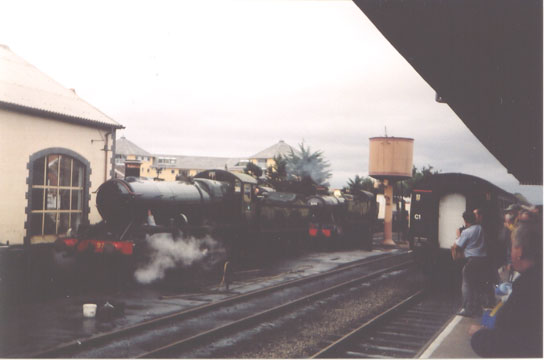
There is a car park adjacent to Minehead station. On the one occasion I travelled on the railway, I allowed two hours to travel from another part of Devon, and ended up driving at rally speeds for the last hour to catch my train, and caught it with 3 mins to spare. Devon roads are slow. You have been warned.
Minehead is a tourist resort, and there are a few other items of interest near the railway, e.g. Dunster Castle.
Northampton and Lamport Railway
One of the minor railway preservation societies. The track is very short, little more than long enough to get the train out of sight of the station, and if you get bored with riding the train you can walk to the end of it. There is a respectable collection of locomotives and rolling stock.
Gloucester Warwickshire Railway
This preserved steam railway offers a 2x 10-mile round trip between Toddington and Cheltenham Racecourse through some of the most spectacular scenery in the Cotswolds. The track was once a GWR main line.
Main stations (and boarding points) are at Cheltenham racecourse, Toddington and Winchcombe. Currently (2011) the railway operates in two halves because of a trackbed collapse. To be honest, as it’s a while since I visited this one I don’t remember a lot about it, except that it offered a decent length of run though some pretty countryside. Plan on using the train trip(s) as the basis for a day out. As with most preserved railways, tickets are available that let you hop on and off the train as much as you like. The workshops are not open to the public.
Wimpole Hall & Estate, Cambs.
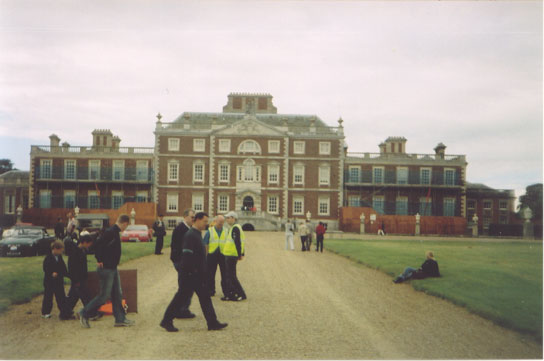
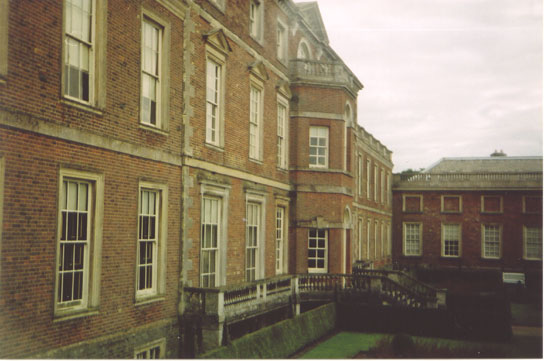
Rockingham Motor Speedway
The circuit was originally built in 2001 for American-style oval racing, but the middle has now been developed to allow for up to 13 track layouts. There is grandstand seating on one side of the oval, facing the pits and the lap display tower, allowing all spectators to be seated with a view of the whole circuit. It’s a big place, so you might want to bring binoculars. Some of the seating is under cover IIRC. All facilities are modern and there is plenty of hard-stand parking, unlike some other circuits! For some events, spectators were allowed to cross under the track at lunchtime and have a pit walk-about.
Castle Drogo, Devon
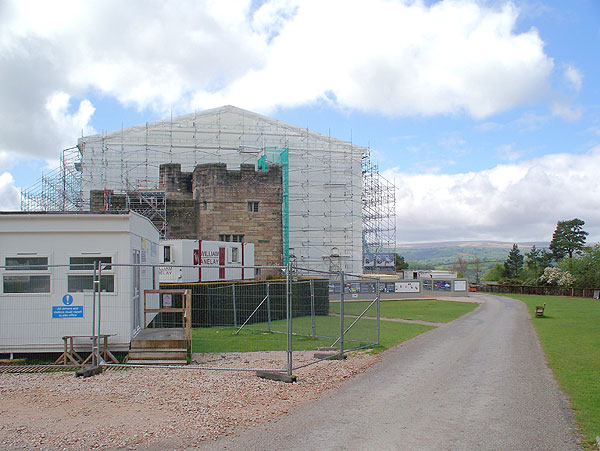 National Trust
National Trust
The castle, built of granite, is in fact a fairly modern construction, designed by Edwyn Lutyens for Julius Drewe, a self-made millionaire and owner of Home and Colonial Stores. It was built between 1910 and 1930.
Inside, there are 1930’s style baronial interiors and family keepsakes. Outside, the house is dramatically sited on high ground overlooking a steep valley. There is a garden, and there are walks along the edge of the gorge.
The house suffers from water penetration, mainly through the flat roofs, whose unconventional asphalt topping was not a success. A further £11 million effort is being launched to fix the intractable leak problem. [£11m! No wonder people are reluctant to buy homes of non-traditional design 🙂 ]
Road access is steep, narrow and bendy.
Revisited May 2015: The roof repair is under way, and large amounts of granite have been removed from roofs and parapets to give access to the failing asphalt. The numerous windows are also being refurbished and given modern sealants. The interior has been cleared of vulnerable contents and access is limited. Some of the accessible rooms contain elements of a special modern art exhibition.
There is a viewing platform on top of the scaffolding giving a view of the roof, but I was not able to go up because of poor weather. However you can get some idea of what is being done by peering out of windows during your tour.
Revisited April 2017. Restoration continuing – first half completed and scaffolding moved to second section. Went up scaffolding for roof visit and view of light wells over kitchen.
The formal gardens are unaffected by the building works, and worth a visit as you return from the castle.
